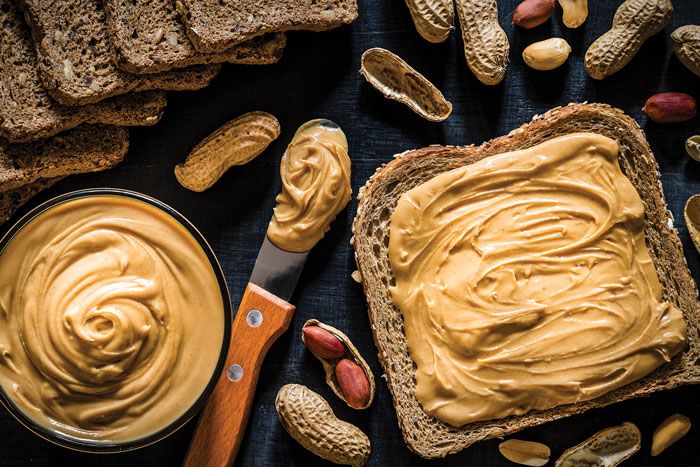Transparency influences shopper trust; Are vegetarians less extroverted?
NEWS
Transparency influences shopper trust
A study of over 1,000 omnichannel grocery shoppers across the United States revealed that distrust in brands and institutions is at an all-time high. The research, conducted by FMI and Label Insight, found that increasing health and safety concerns among consumers are reflected in a strong majority (81%) indicating that product transparency is important to them.
Consumers judge a brand or manufacturer to be transparent if it provides a complete list of ingredients (62%), describes ingredients in plain English (53%), supplies certifications such as USDA organic (48%), and provides in-depth nutritional information (47%).
Most shoppers (61%) believe manufacturers, brands, or government institutions are completely responsible for providing detailed product information, but only 41% completely trust information provided by manufacturers and brands, and only 46% trust information provided by government institutions.
With more consumers making purchases online, expectations for transparency are higher for online outlets versus brick-and-mortar. Forty-two percent of shoppers believe online grocery retailers should be responsible for providing detailed product information compared with 35% who expect that of brick-and-mortar grocers.
When consumers need more detailed product information, they turn to the internet. Forty-seven percent research ingredients online in the face of confusion, and 89% are likely to seek details on a product if more information is available online.
Asia-Pacific propels foodservice growth
The Asia-Pacific region, led by China, is forecast to account for 64% of global foodservice revenue gains through 2024, according to research from Freedonia Group. With the COVID-19 virus largely under control in major markets like China, Japan, and South Korea, growth will be driven by the resumption of foodservice activities, albeit with restrictions that could become the new normal worldwide.
Among the drivers in large developing countries, such as China, India, and Indonesia, are rising incomes and Westernizing dining customs, which help to support strong growth opportunities for global chains—including KFC, McDonald’s, Pizza Hut, Starbucks, and Taco Bell—that target the region for expansion.
The majority of regional gains will occur in China, as larger incomes support strong growth in all segments and major international brands expand their presence. Revenues will also be boosted by increasing investment in automated foodservice technologies and online food delivery infrastructure.
Mature markets, including Australia and Japan, will play a role in supporting regional revenue growth; however, the greatest absolute gains will come from the large but slow-growing full-service dining segment. In China, Japan, and South Korea, additional opportunities exist in investments that expand the use of self-service kiosks, vending machines, and food delivery robots.
Are vegetarians less extroverted?
People who consume a predominantly plant-based diet tend to be more introverted than those who mainly consume animal products, according to a study of nearly 9,000 vegetarians conducted at the Max Planck Institute for Human Cognitive and Brain Sciences. The research, which investigated how plant-based nutrition is related to the body and the psyche, also found a correlation between lower consumption of animal products and lower body mass index (BMI) on average.
The researchers suggest that a smaller proportion of heavily processed foods in a plant-based diet could account for a lower BMI among vegetarians. “Products that are excessively rich in fat and sugar are particularly fattening. They stimulate the appetite and delay the feeling of satiety. If you avoid animal foods, you consume fewer such products on average,” explained Evelyn Medawar, first author of the underlying publication, in a press release. Medawar also noted that vegetarian diets often contain more fiber, which is filling. “People who eat predominantly vegetable foods may therefore absorb less energy,” she adds.
The link between introversion and plant-based diets was harder to explain, leading the researchers to conclude that further studies may help shed light on how people identify with the characteristics of their diet. “It is difficult to say what the reason for this is,” said researcher Veronica Witte, in a press release. “It could be because more introverted people tend to have more restrictive eating habits or because they are more socially segregated because of their eating habits.”
Uncertainty plagues global food markets
Although ambiguity will affect the food markets for months to come, the agri-food sector is likely to demonstrate greater resilience than other sectors, according to a new report released by the Food and Agriculture Organization of the United Nations (FAO).
The Food Outlook report provides the first 2020–2021 forecasts for production and market trends for the world’s most traded food commodities, including the following:
• Cereals. Global cereal production in 2020 is forecast to surpass the previous year’s record by 2.6%, with world cereal trade for 2020–2021 projected to increase by 2.2% from 2019–2020.
• Meat. World total meat production is predicted to fall by 1.7% in 2020 as a result of animal diseases, pandemic-related market disruptions, and the lingering effects of droughts. International meat trade is likely to experience moderate growth sustained mainly by high imports from China.
• Sugar. World sugar production is forecast to drop for the second consecutive year, falling below the estimated level of global consumption for the first time in three years. Sugar trade is expected to expand due to low prices and stock rebuilding in some traditional importing countries.
“While COVID-19 has posed a serious threat to food security, overall, our analysis shows that from the global perspective, agricultural commodity markets are proving to be more resilient to the pandemic than many other sectors,” said Boubaker Ben-Belhassen, director of the FAO trade and markets division, in a press release. “That said, owing to the size of the challenge and the enormous uncertainties associated with it, the international community must remain vigilant and ready to react if and when necessary.”
Improving stability in peanut butter
Oil separation often occurs in peanut butter during storage, which reduces sensory quality and shortens shelf life. A recent study in the Journal of Food Science explored the use of rice bran wax to improve stability.
Premelted rice bran wax was added to peanut butter and the mixture was heated for 40 minutes under constant stirring, then cooled for 12 hours and placed at room temperature. Optimum conditions were determined to be the addition of rice bran wax at 4.0 wt%, a heating temperature of 85°C, and a cooling temperature of 20°C. Under these conditions, oil loss decreased from 12.2% to 4.0%, and adhesiveness increased from 23.5 g·s to 165.9 g·s. After storage for 25 weeks, the acid value increased from 0.65 mg/g to 0.80 mg/g, and the peroxide value increased from 0.116 meq/kg to 0.127 meq/kg.
The researchers concluded that rice bran wax was a good stabilizer for peanut butter, providing low oil loss and appropriate adhesiveness, which improved stability and facilitated spreading. In addition to the amount of rice bran wax, the cooling temperature (the crystallization temperature) was a key factor affecting stabilization. The best stabilization effect was obtained when rice bran wax formed needle-like crystals and peanut particles were uniformly distributed.
Despite low cost and excellent stabilization, rice bran wax had the disadvantage of producing undesirable flavor. Therefore, the researchers suggested combining rice bran wax and other organic gelators to stabilize peanut butter and similar products.






